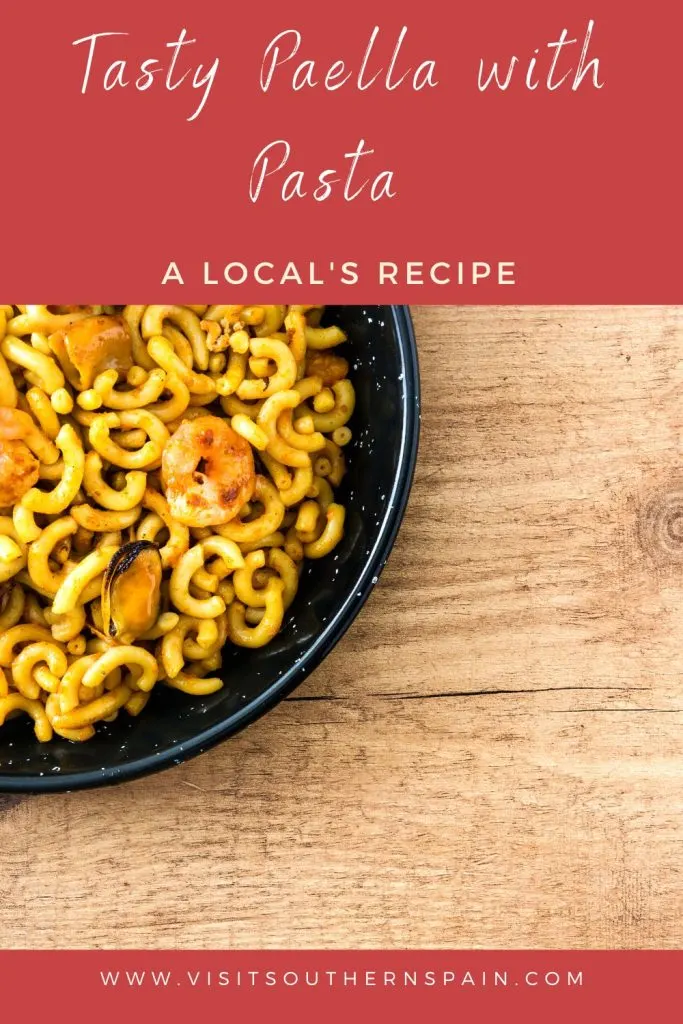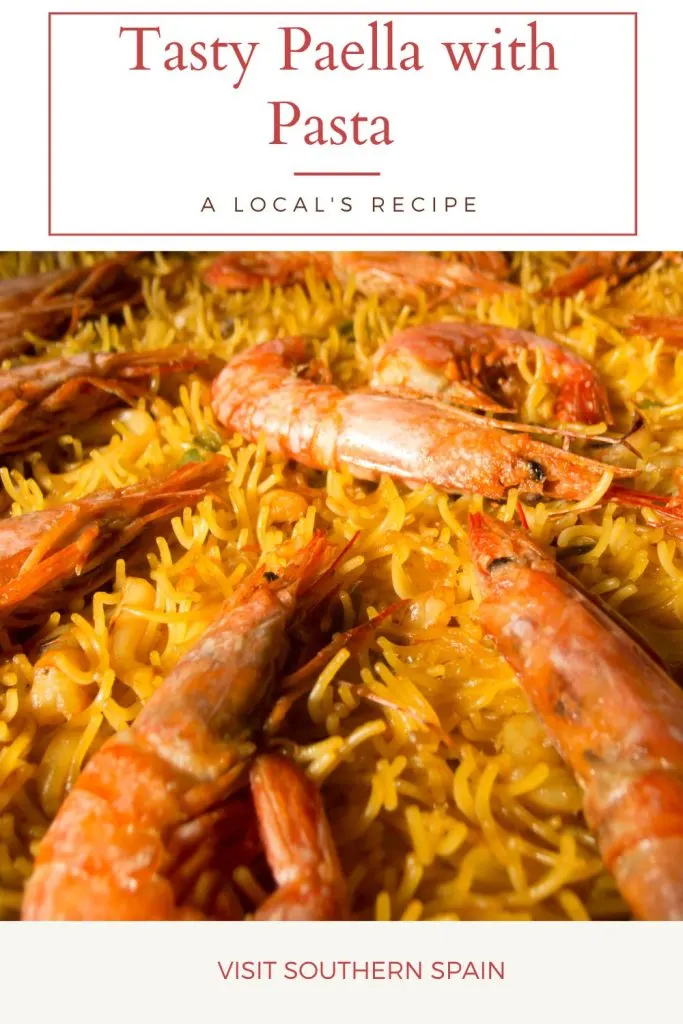Most likely, when you hear the word paella, the first image that comes to mind is a large plate of rice full of seafood, but here we will talk about another type of paella.
In this article, we will introduce you to the fantastic paella with pasta, a unique take on the typical Spanish recipe, which retains the magic of the original recipe but replaces the rice with delicious noodles.
Continue reading to learn how to make Spanish paella, all the changes you can make to the ingredients, and a bit more about the history of this Spanish dinner recipe.
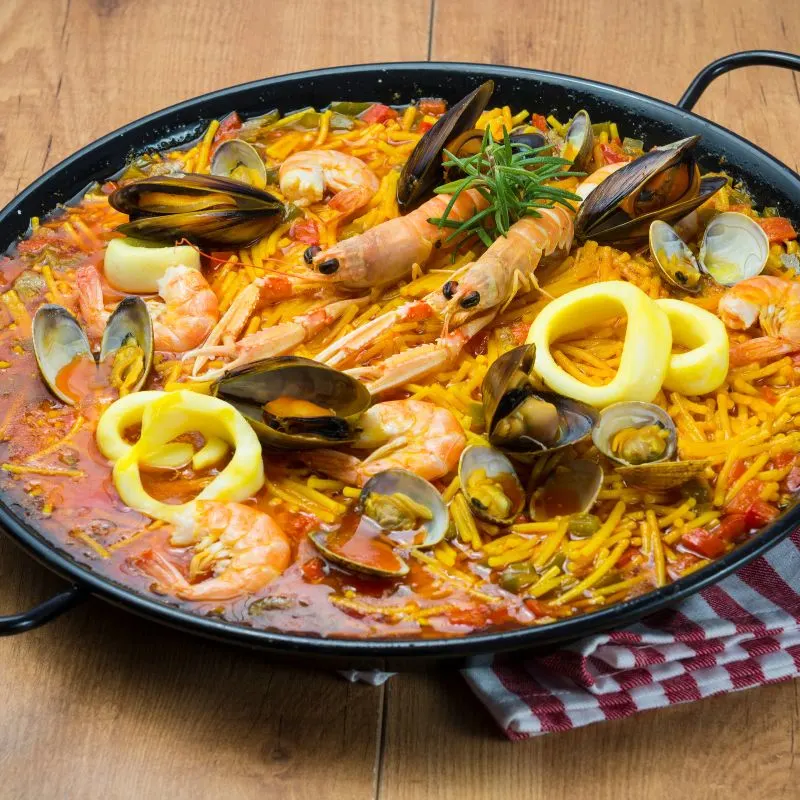
You, dear reader, support this blog. If you purchase through a link, we earn a small commission. As an Amazon Affiliate, we earn from qualifying purchases.
Background of the Dish
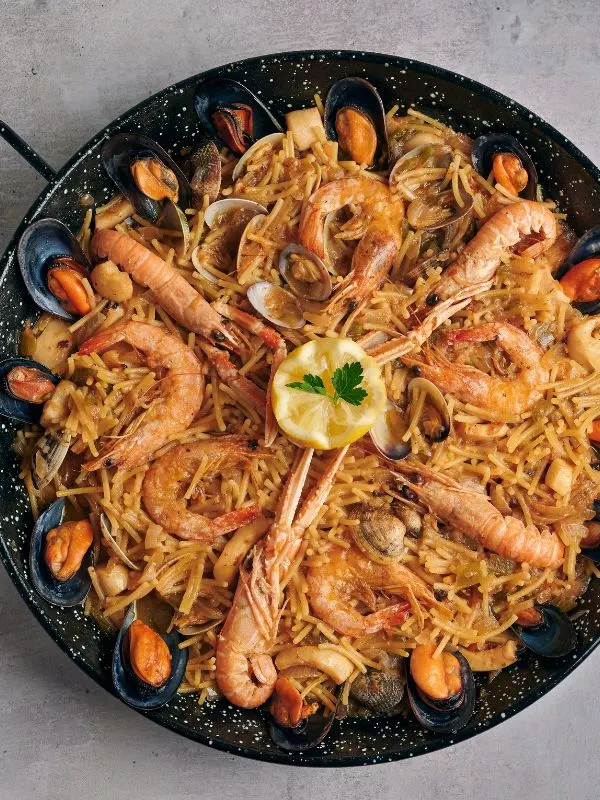
Legend has it that paella with pasta was created by Gabriel Rodríguez Pastor, a cook who worked on a ship where the captain ate all the sailors’ ration of rice.
Of course, there was always plenty of seafood and fish broth, so the cook got to work and he had the great idea of adding noodles instead of rice to prepare this dish.
Although the story of how paella with pasta was created has not been 100% proven, all Spaniards choose to believe that it was this way, and so do we.
Pin for later!
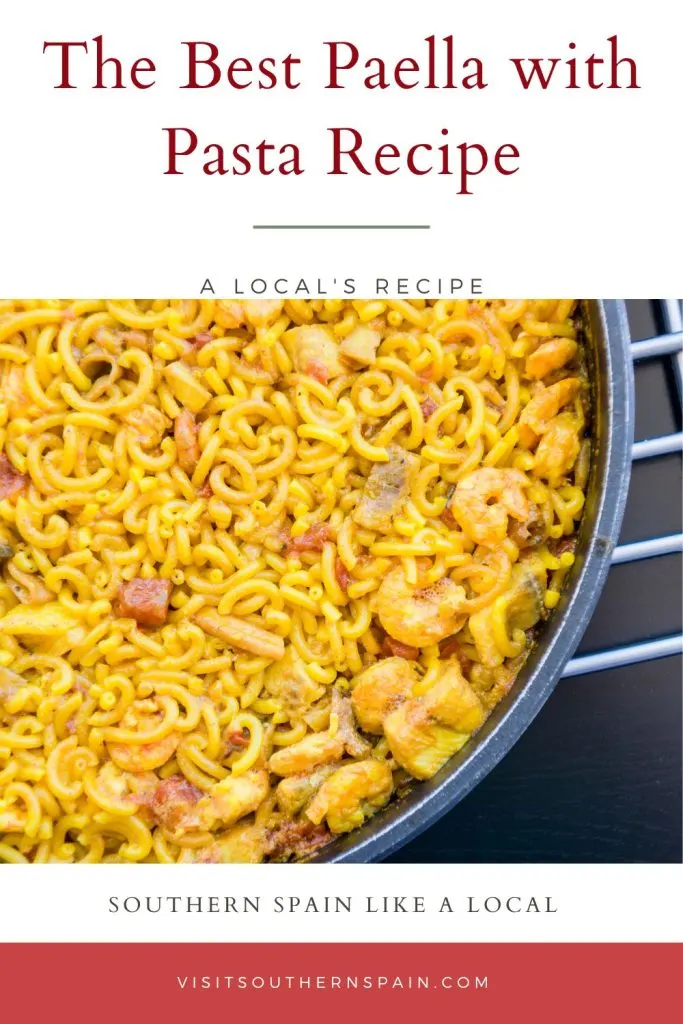
Things You’ll Need for Paella with Pasta
To make this special type of paella you need noodles, seafood, and broth as the main ingredients.
The only equipment needed for paella with pasta is a large pot and stove, so anyone can do it at home.
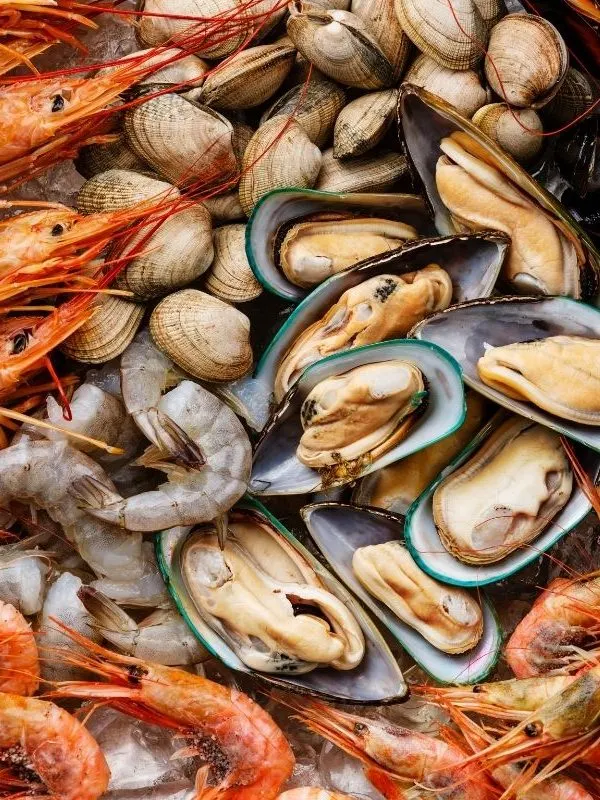
Ingredients
- 400 g noodles (fideuá type)*
- 9 prawns
- 1 cuttlefish
- 1kg mussels
- 4 cups (1l) fish broth
- 2 cups (480ml) water
- 3 tomatoes (crushed)
- 1 onion
- 3 garlic cloves
- 1 red bell pepper
- 1/2 teaspoon sweet paprika
- 1 teaspoon saffron threads (gives the yellow color)
- Extra virgin olive oil
- Salt and pepper to taste
*In the ingredient substitution section, we tell you more about them or how to replace them.
How to Make Paella with Pasta – Step by Step Guide
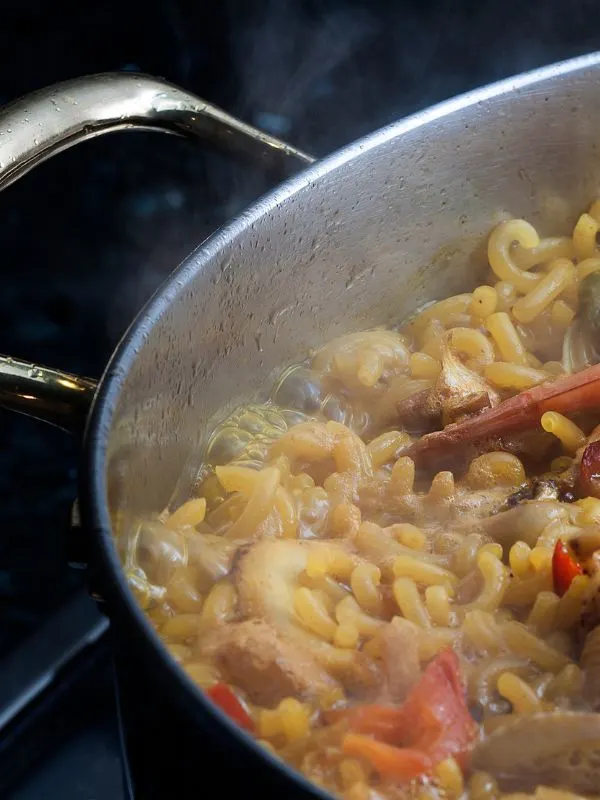
- The first step in this noodle paella recipe is to remove the antennae and legs of the prawns. You can skip it if you ask the fishmonger to sell you the ones that come clean, or use the frozen ones (that usually come without those parts).
- Now with a splash of extra virgin olive oil in a large pot, fry the prawns and set aside.
- Then add the cuttlefish cut into small pieces. Fry the cuttlefish until it begins to take on a slight color. Meanwhile, steam the mussels.
- While everything is cooking, cut the onion, garlic, and pepper into very small pieces. Once the cuttlefish has taken on a slight color, add these vegetables.
- Fry for a few minutes until the vegetables start to get a little more tender, for about 5 to 7 minutes.
- Pour the crushed tomato into the pot and let it cook. Add the sweet paprika and mix well.
- After that, add the fish broth, the water, and the saffron threads (they will give it a yellow color like the one of the traditional paella).
- Cook everything together in the same pot for 15 minutes.
- After that, check that the seasoning is right (you could add more at this point) and add the noodles.
- For the final step, cook the Spanish paella for 18 minutes and when there are 3 minutes left to finish cooking, add the prawns and mussels so everything heats up together. Then serve your paella valenciana hot.
Substitution of Ingredients
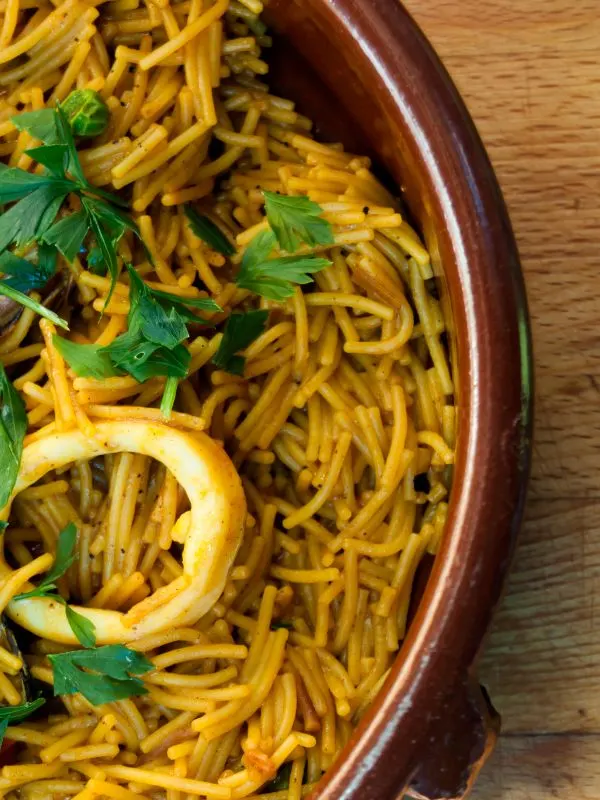
This fideua is one of the most popular seafood paella recipes, but there are hundreds of changes you can make to the ingredients.
First, we will talk about the noodles: you can use any you like, but keep in mind that if they are very thick they will take longer to cook.
If you want a more crunchy paella with pasta you can use thin noodles, just cook them for less time and let them toast a little.
You can also avoid using seafood, (although it would no longer be the typical paella) and make a vegan or vegetarian paella.
In both cases, you should add a large number of vegetables and use vegetable broth instead of fish broth, if it is vegetarian you can add poached eggs.
If you like paella but don’t want such a strong seafood flavor, you can make a shrimp paella instead of using the other seafood ingredients listed in the recipe (it’s not as invasive but it still has the spirit of the original recipe).
Tips on Serving Paella with Pasta
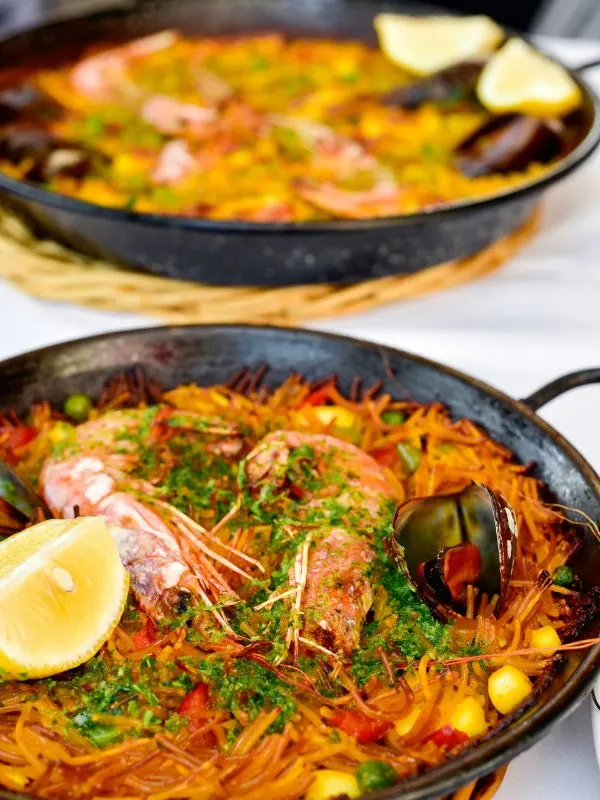
This paella with noodles is a perfect main dish for any occasion: lunch with the in-laws, dinner with friends, or a romantic date at home.
Being a paella noodle you can put a little grated cheese on top of each plate (or in a mini bowl and let people add as much as they want).
You could serve this paella without seafood if you have a guest who doesn’t like that type of food.
But we recommend that you cook the noodles separately since even if you remove the seafood the dish will still have that flavor.
Another great pasta recipe from Spain that you must try is the Spanish chorizo pasta with tomato sauce and the Spanish chorizo paella recipe. You’ll love them!
How to Store Paella with Pasta
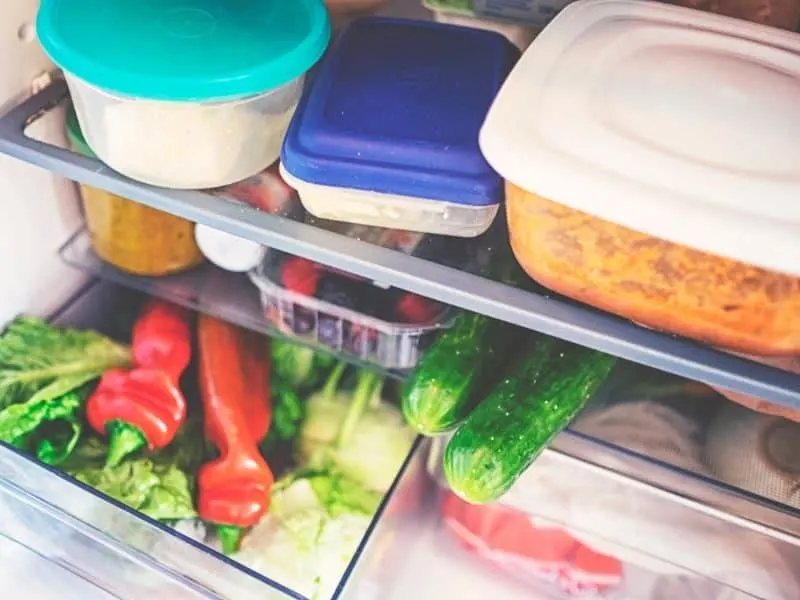
Unlike authentic Spanish paella, this one can be a bit trickier to store due to the noodles.
You can store this paella with pasta in the fridge for up to 4 days, just make sure to cover it well and let it come to room temperature before storing it.
Noodles don’t always freeze well, as sometimes they end up with a soggy or rubbery texture, so we recommend not freezing them unless you have a lot of leftovers.
If you still choose to freeze the pasta paella (knowing the negative impact that that might have on the noodles) you can store it there for up to 30 days, and then let them defrost the night before serving.
Some foods that do freeze well without any risk are Spanish rice and beans with pork, Spanish Chorizo Rice, and Spanish rice and beans recipe, so if you were planning to make a recipe perfect for meal prep you can do those.
Recipe Card: Paella with Pasta
Spanish Paella with Pasta Recipe
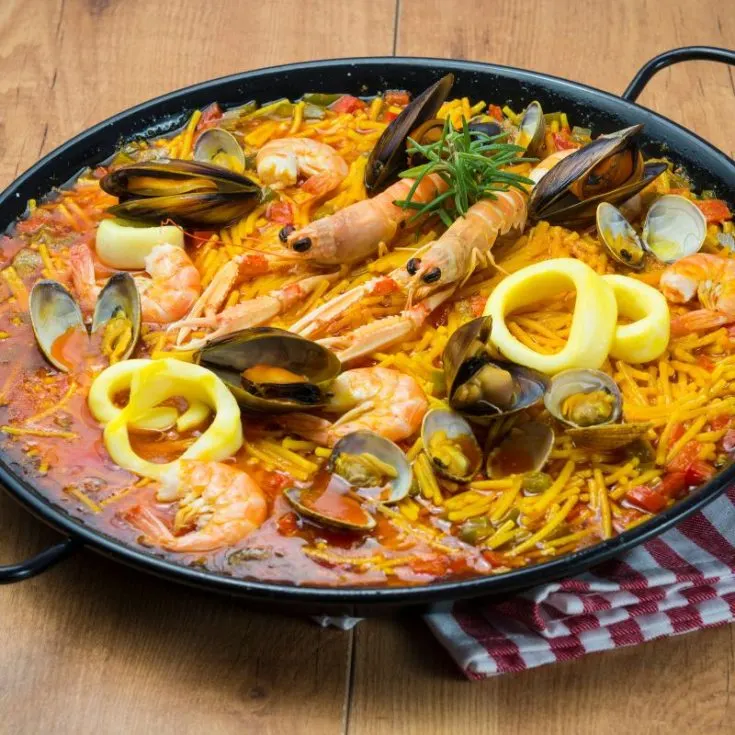
Most likely, when you hear the word paella, the first image that comes to mind is a large plate of rice full of seafood, but here we will talk about another type of paella.
In this recipe, we will introduce you to the fantastic paella with pasta, a unique take on the typical Spanish recipe.
The magic of the original recipe replaces the rice with delicious noodles and you'll learn how to make it from scratch.
Ingredients
- 400 g noodles (fideuá type)*
- 9 prawns
- 1 cuttlefish
- 1kg mussels
- 4 cups (1l) fish broth
- 2 cups (480ml) water
- 3 tomatoes (crushed)
- 1 onion
- 3 garlic cloves
- 1 red bell pepper
- 1/2 teaspoon sweet paprika
- 1 teaspoon saffron threads (gives the yellow color)
- Extra virgin olive oil
- Salt and pepper to taste
Instructions
- Remove the antennae and legs of the prawns (Or you can ask the fishmonger to sell you the ones that come clean).
- With a splash of extra virgin olive oil in a large pot, fry the prawns and set aside.
- Add the cuttlefish cut into small pieces. Fry the cuttlefish until it begins to take on a slight color. Meanwhile, steam the mussels.
- While everything is cooking, cut the onion, garlic, and pepper into very small pieces. Once the cuttlefish has taken on a slight color, add these vegetables.
- Fry for a few minutes until the vegetables start to get a little tender, 5 to 7 minutes.
- Put the crushed tomato and let it cook. Add the sweet paprika and mix well.
- Add the fish broth, the water, and the saffron threads (they will give it a yellow color).
- Cook everything together in the same pot for 15 minutes.
- After that, check that the seasoning is right (you could add more at this point) and add the noodles.
- Cook for 18 minutes and when there are 3 minutes left to finish cooking, add the prawns and mussels so everything heats up together.
Notes
If you use thin noodles then the cooking will be faster, although they will also brown faster so you have to be careful.
The recipe is designed to be made in any regular pot, but if you have a paella pot at home then even better (you shouldn't change anything).
Nutrition Information
Yield
6Serving Size
1Amount Per Serving Calories 429Total Fat 11.9gSaturated Fat 2.8gCholesterol 175mgSodium 1392mgCarbohydrates 34gFiber 2.9gSugar 4.9gProtein 45g

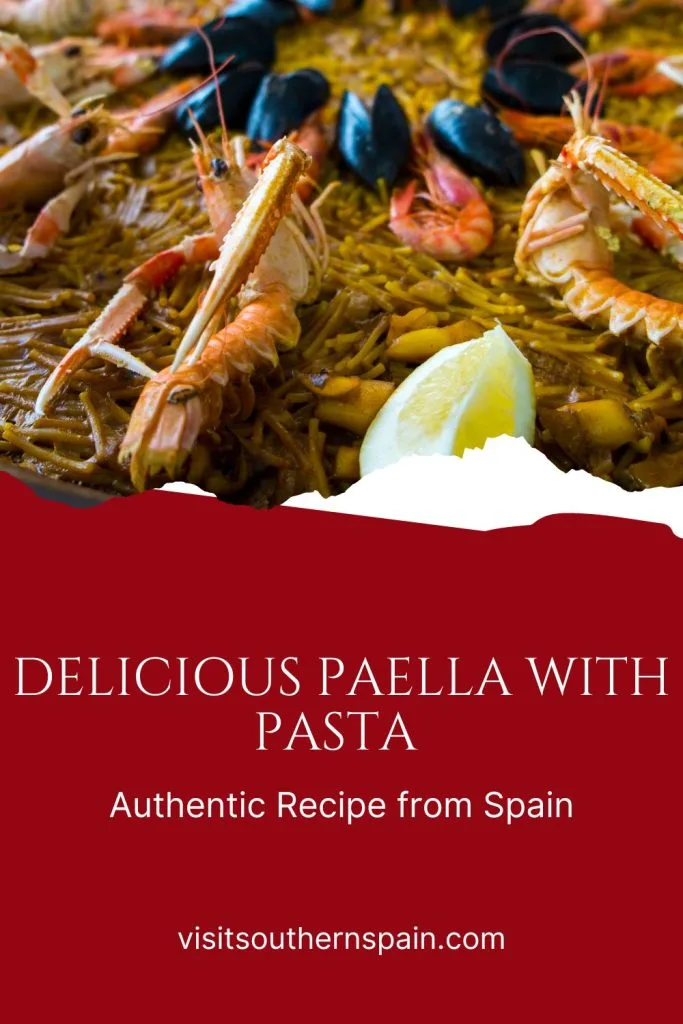
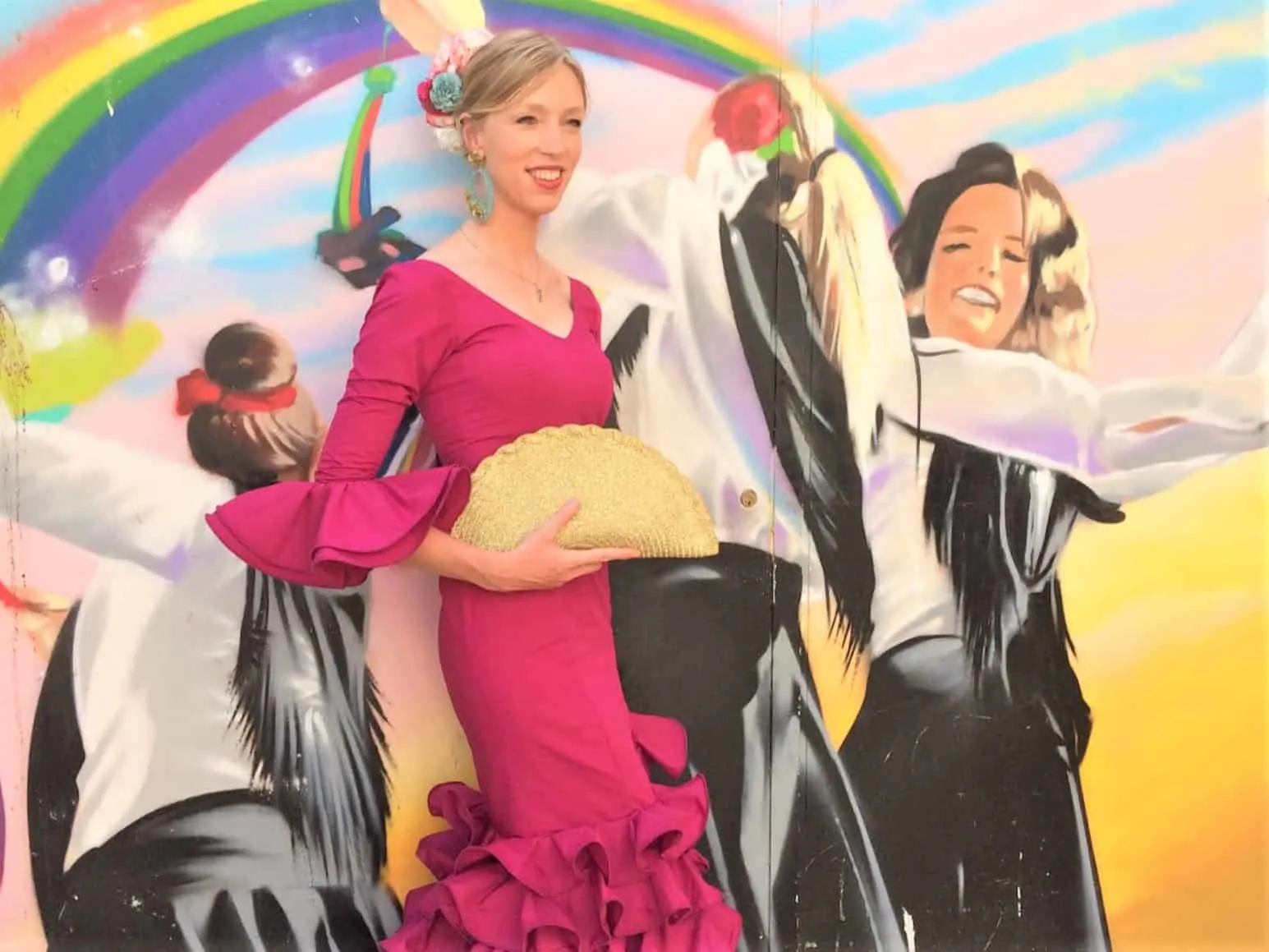
Hola, I’m Paulina! Together with my team, we are passionate about Southern Spain. Here we share all you need to know for great times in Southern Spain with the best places to visit, stay and, of course, the best food to eat.
Let’s dive in and explore Southern Spain’s outdoors, food and culture con pasión!

